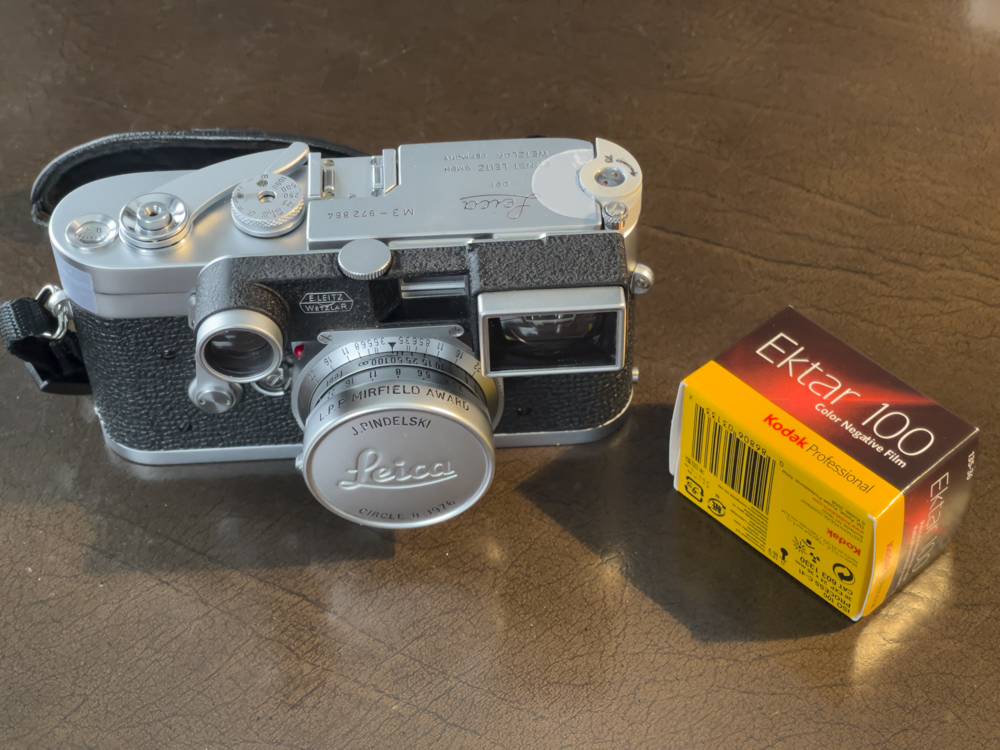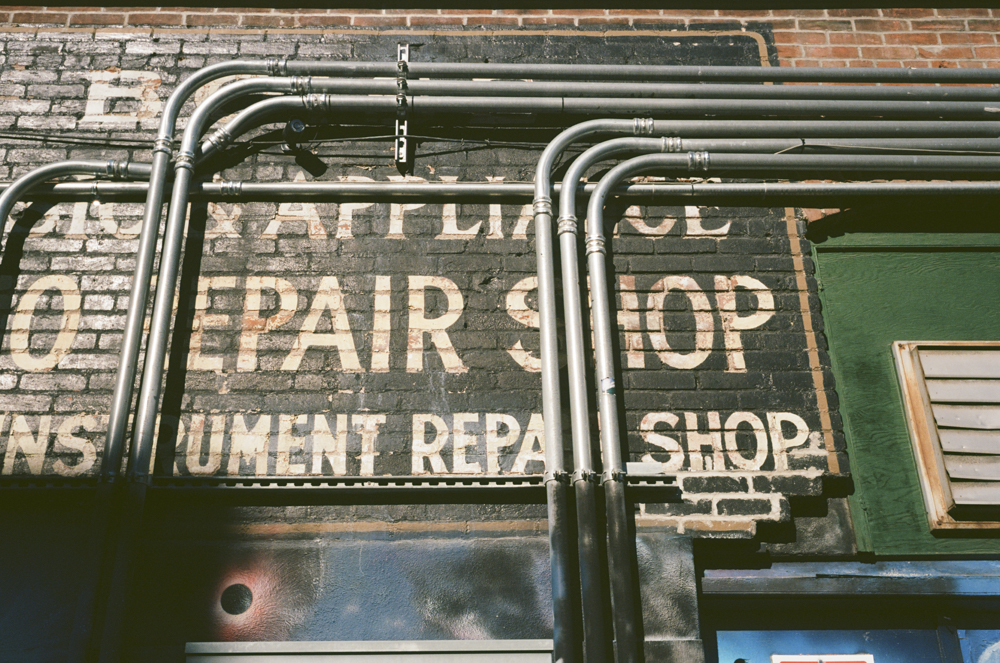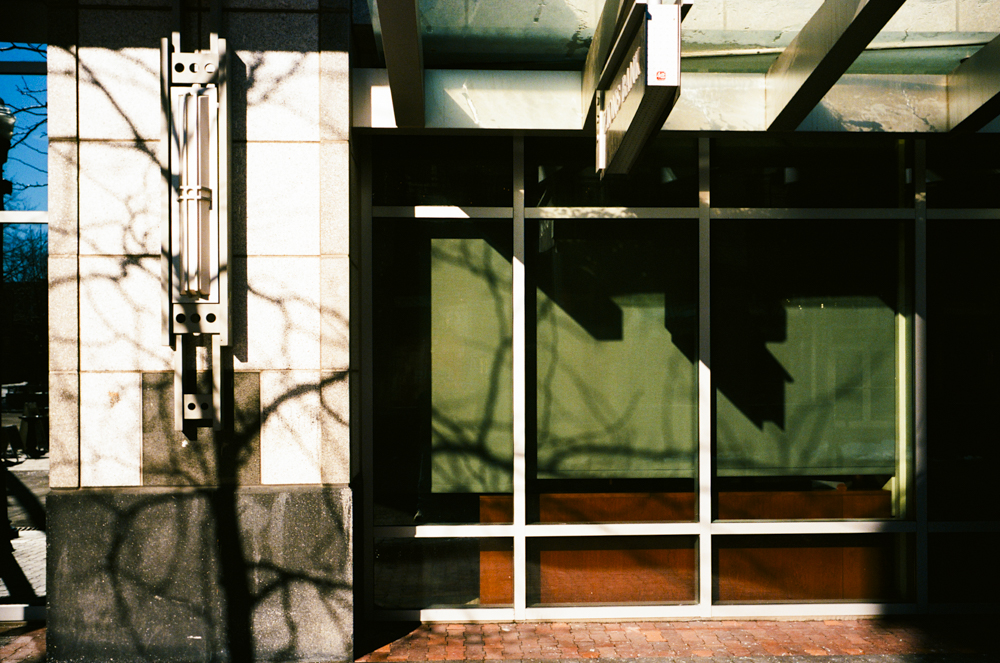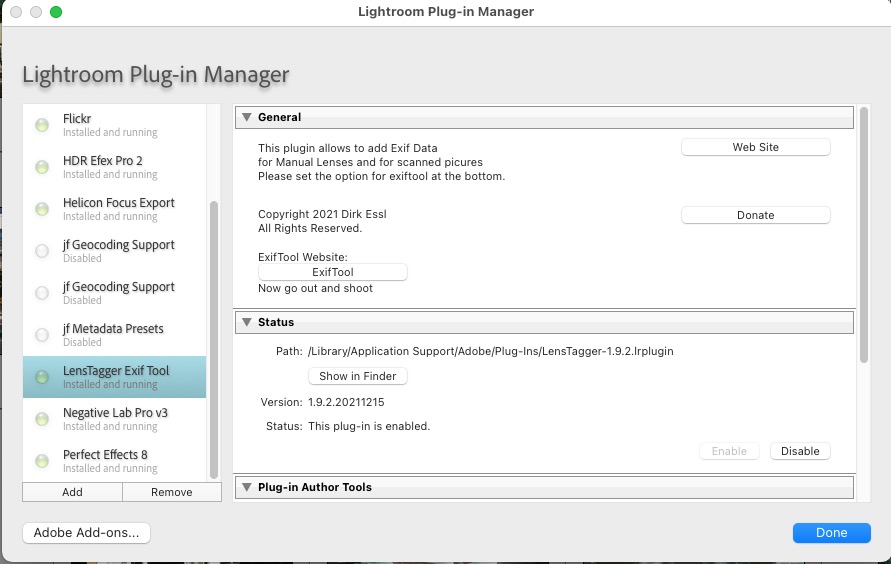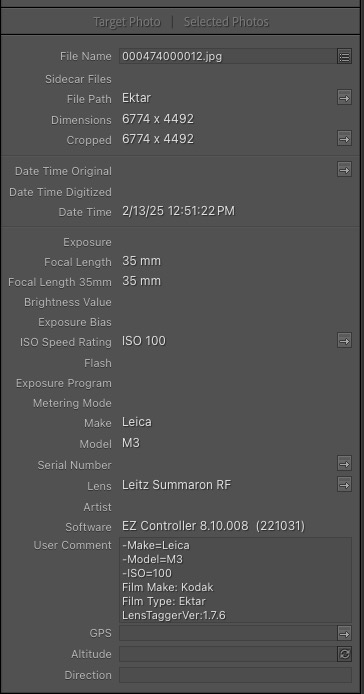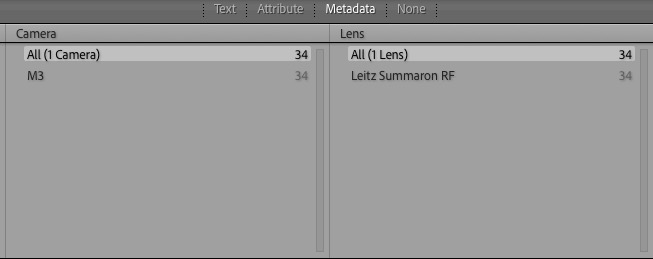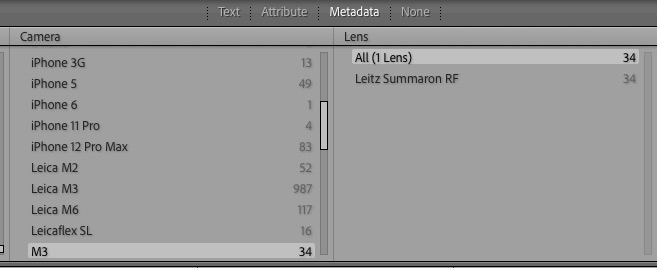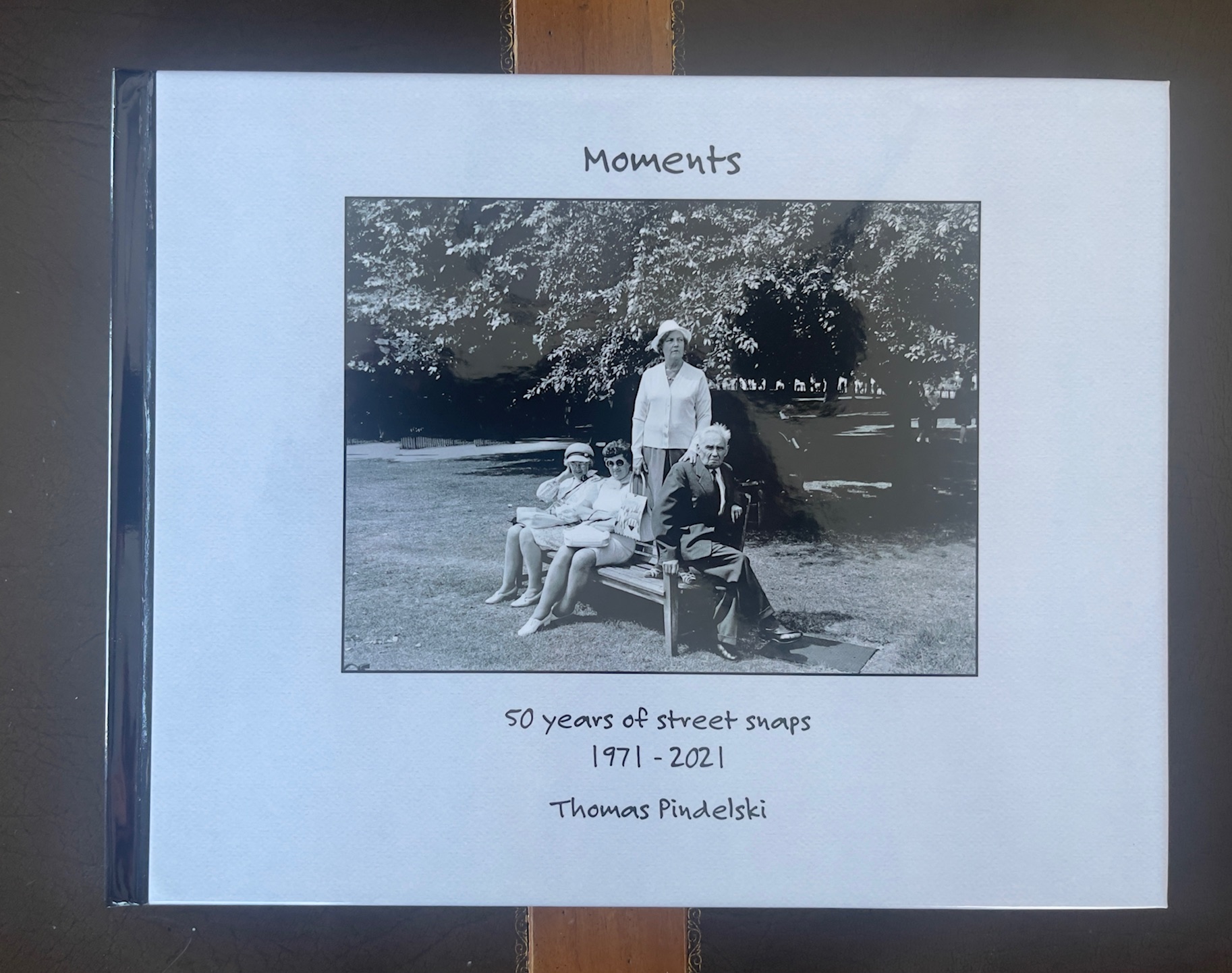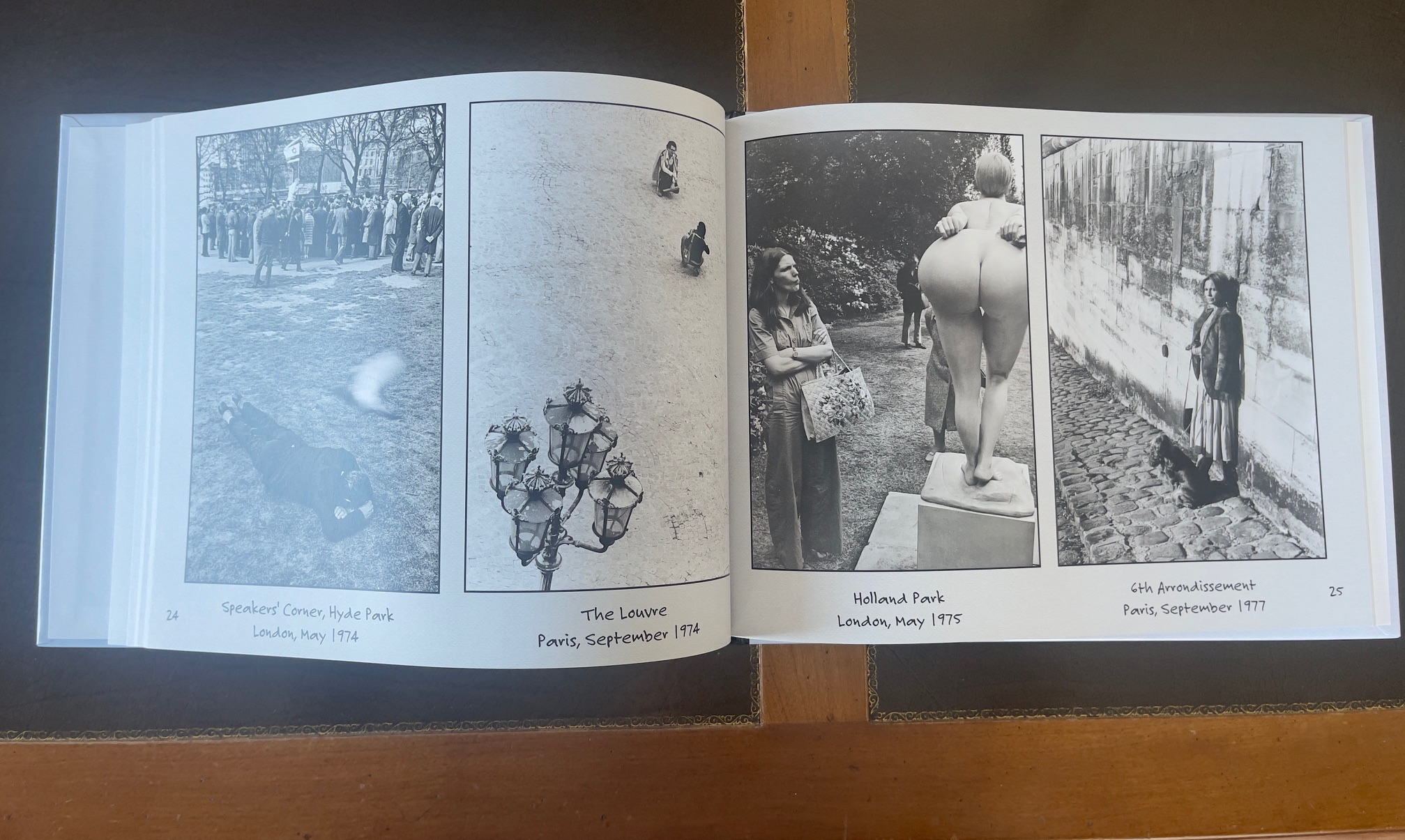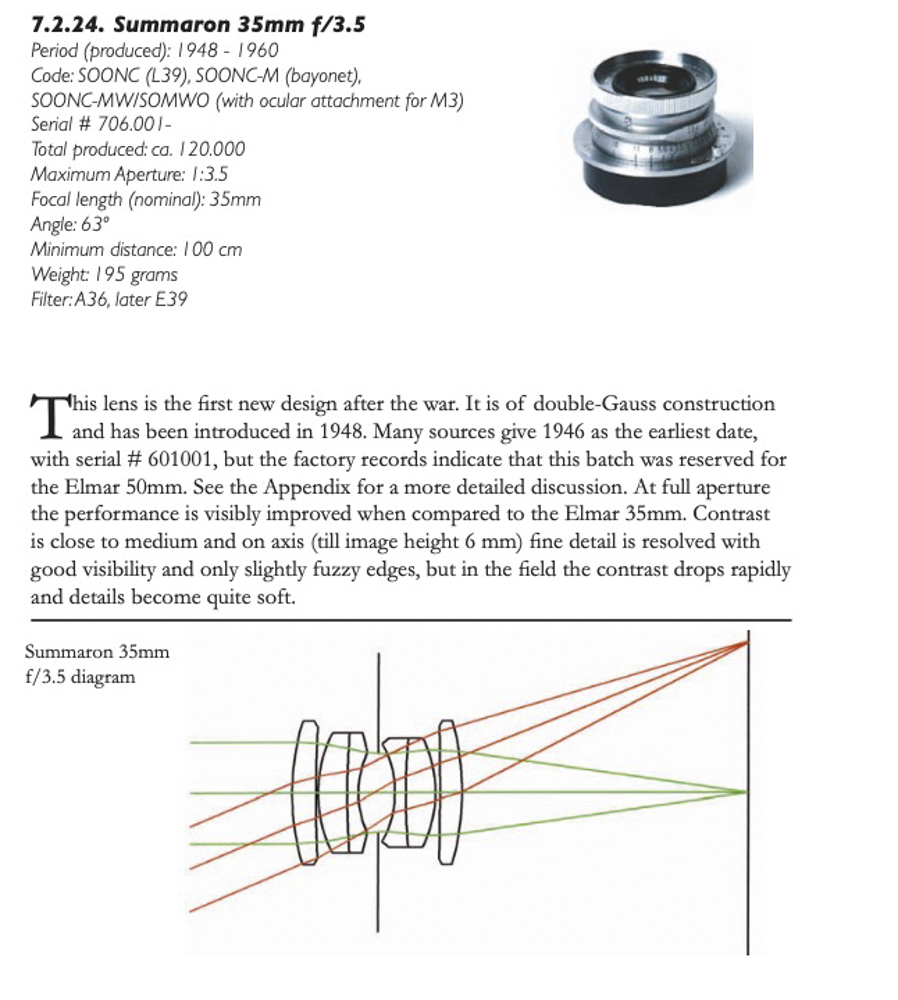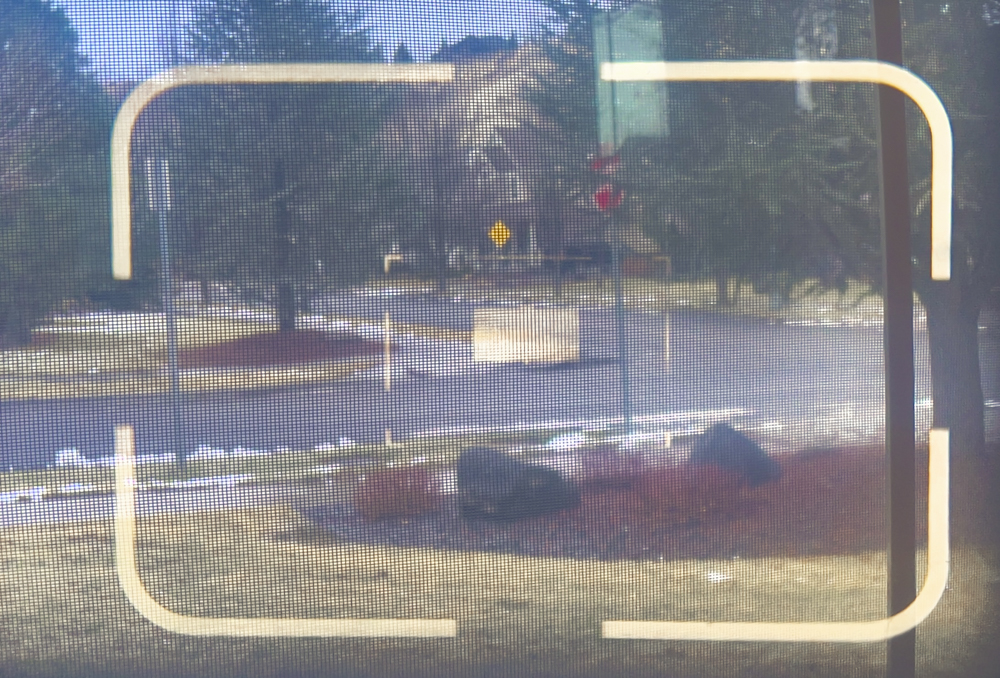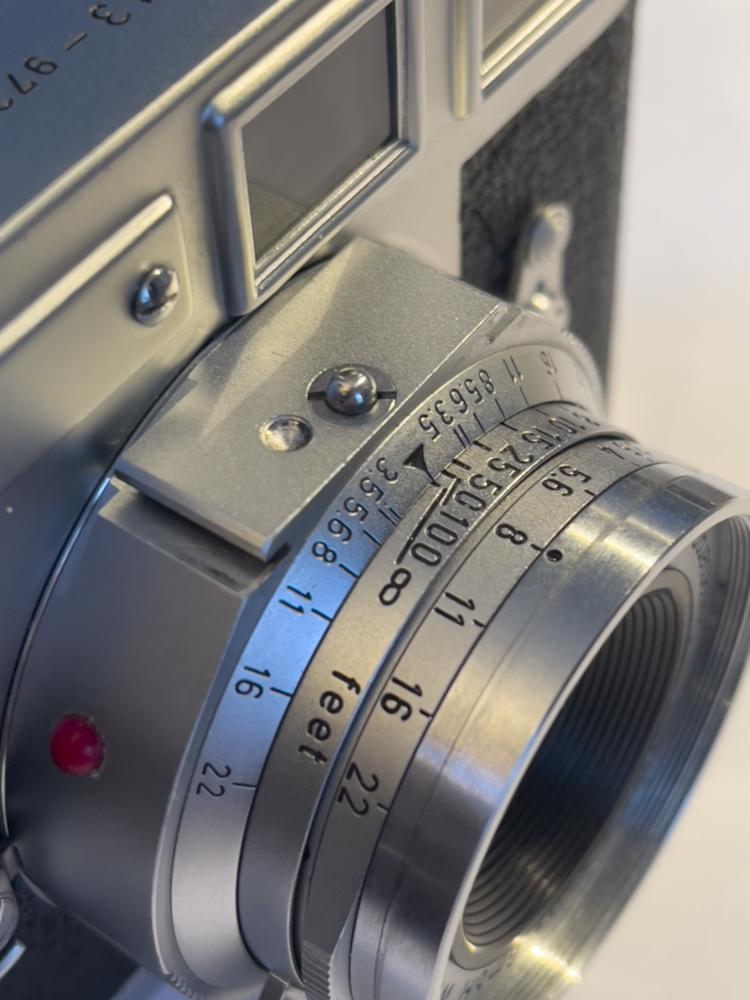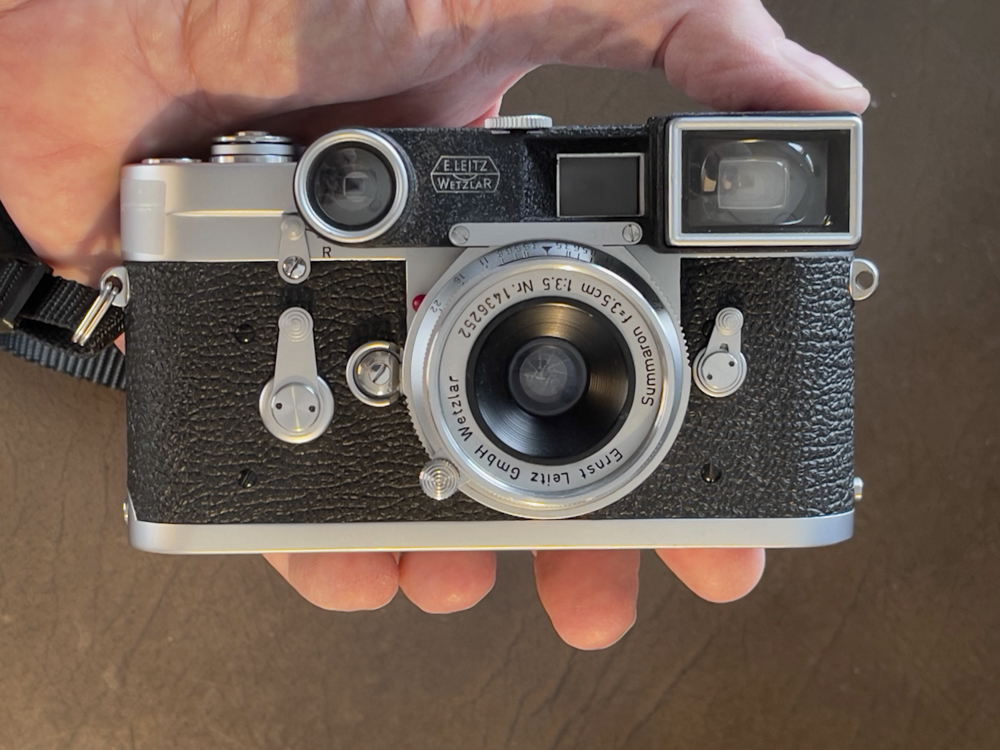Small, handy and accurate.
For an index of all Leica-related articles click here.
In my first outing last weekend with the ‘new’ Leica M3 I had to resort to using an app on the iPhone to measure exposure. Not a big deal but hardly as handy as using a coupled Leicameter attached to the accessory shoe of the camera.
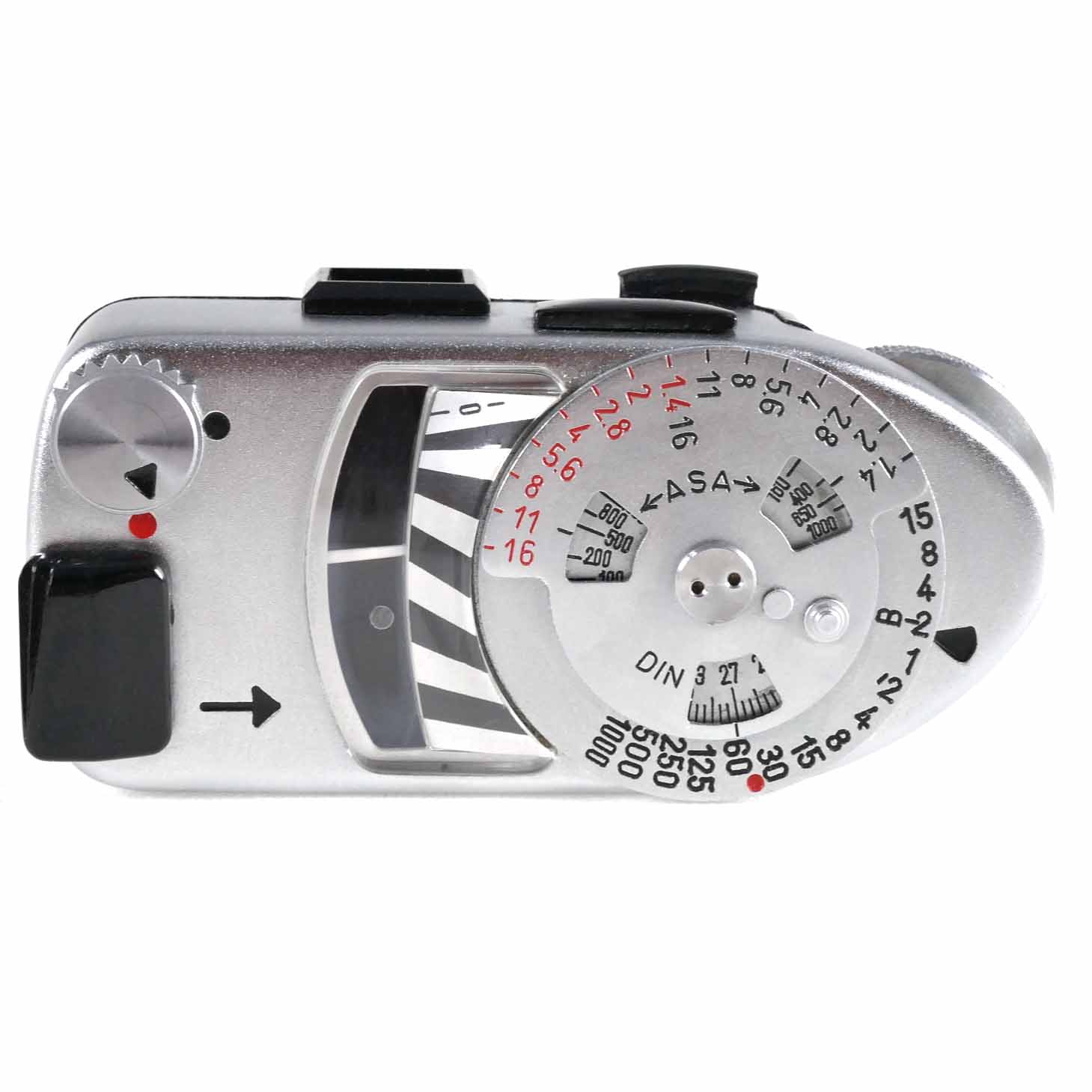
The Leicameter MR4.
There were three major versions of the coupling Leicameter, introduced with the Leica M3 in 1954. Each coupled with the rather too small shutter speed dial on the camera’s top plate, reversing the direction of speed setting to clockwise for shorter shutter speeds and conferring shutter speed changes on a much larger and easier to use knurled knob, which you can see at the lower right, above.
The first two versions used selenium cells which require no battery. The Leicameter M had a mechanical flap to switch between low and high sensitivity. Its successor, the Leicameter MC, dropped the flap in favor of a two position switch, visible at top left in the picture above. Much more elegant. Both of these accepted a rather clunky external booster cell which increased the sensitivity by 2.5 stops from EV6 to EV3.5. The latter corresponds to 1/60 at f/3.5 with ISO100 film.
The MC stuck with the selenium cell and I used one for decades. You had to be sure to point the camera, with meter attached, down to avoid large sky areas as the meter’s angle of acceptance was large, probably about 65 degrees. And the needle did not lock so you noted the aperture reading in that down tilted position, transferring it to the aperture ring on the lens. It was fast and efficient, but sadly finding an MC in working condition is an exercise in futility. It was last made in 1966 and all seem to come with a dead cell, with no replacement parts to be found. Selenium is a poison and its use in exposure enters was banned years ago. The only model variations in the MC, introduced in 1957 when the Leica migrated to standard shutter speed setting (1/4, 1/8, 1/15, etc.) is that the maximum marked aperture started at f/1.5 and changed to f/1.4. Otherwise the meter was unchanged during its 9 or so year life and the MC and its booster came with clip on matte white incident light screens for incident light readings, which were all the rage back then. Instead of measuring the light reflected from a subject you measured the light falling on it. A bit Rube Goldberg but it worked for Hollywood (check all those old Sekonic light meters with the translucent white domes).
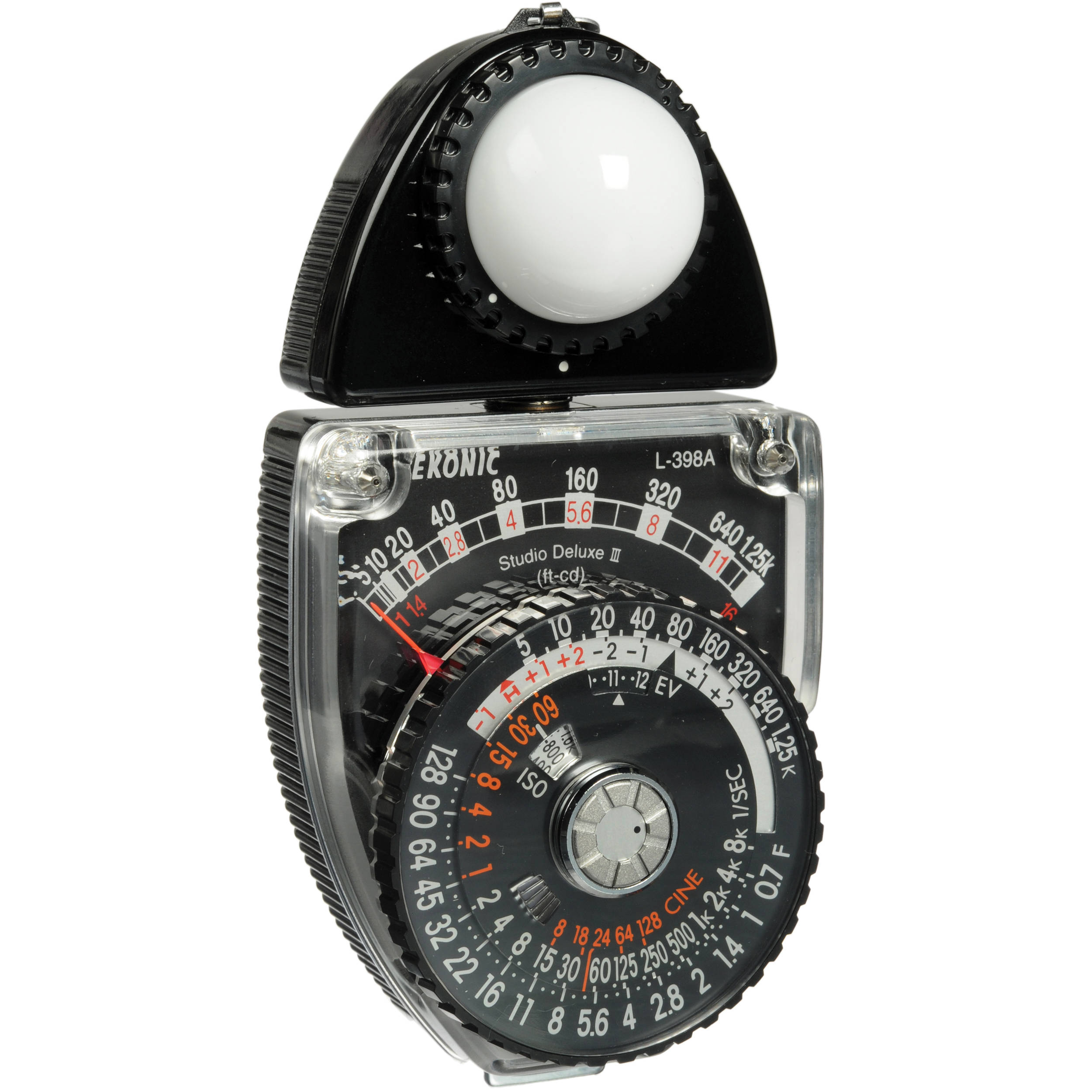
The Sekonic L-398A, much loved in film era Hollywood.
The MC was replaced by the MR in the early 1960s and enjoyed a long life, with MR production ending in 1987. Like all Leicameters it was manufactured by Metrawatt in Nuremberg but unlike its predecessors the CdS cell in the MR dictated the use of a PX13 or PX625 1.35 volt battery. There were three significant benefits to the switch from selenium to Cadmium Sulphide light sensitive cells.
- First, sensitivity jumped 1.5 stops to EV2 (1/60th at f/2 with ISO100 film) without the need for a clip on booster cell.
- Second, depressing the black tab at the top left took the meter reading and, when released, locked the needle in place, making for a much more robust light measurement process.
- But maybe the best enhancement was that the light sensitive sensor measured a 27 degree distended angle, equivalent to that of the 90mm lens. So the M3 user (and also the M2 fan) could use the 90mm viewfinder frame to select the area of light measurement. Clever.
And to check battery voltage the black tab at top left, viewed from the front, was pressed towards the camera’s rewind knob and if the needle swung to cover the white dot in the display the battery was deemed to be good.
When the Leica M4 came along in 1967 it replaced the knob rewind of the M2 and M3 (their single worst feature) with an angled, fold-out rewind crank which would interfere with the protruding metering switch at the top left, so the switch was shortened and redesigned in the Leicameter MR4 to the design you can see below. This allows the rewind crank on the M4 to clear the meter so that the film can be rewound with the meter in place. No other changes were made from the MR to the MR4. Because I have fitted an aftermarket rewind crank to my M3 I need that extra clearance just as much as the M4 user, so I opted for the MR4, over the MR, for my M3. So there!

The rewind crank just clears the MR4 meter.
Search long and hard and you can find an MR or MR4 in decent working order, but there’s a snag. It’s always something, right? The mercury battery cells used to power the meter have long been discontinued for the same reason the selenium cell for the M and MC predecessor Leicameters was discontinued. Mercury is poisonous and all that recycled battery waste is probably not a good thing. However, there are three options for powering your Leicameter MR or MR4.
- You can use modern PX625A non-mercury batteries but these deliver 1.5 volts instead of the required 1.35 volts, meaning your meter will read too high a light level. You can compensate for this by setting a higher-than-actual ASA (ISO in modern terms) film speed setting on the meter’s dial, but it’s not exactly an elegant solution. Further the discharge curve of the PX625A differs from that of the old PX625/PX13 so as the voltage falls your light readings may go further askew.
- Secondly you can use a Wein EPX625 air cell which delivers the correct 1.35 volts but lasts only 3-6 months once activated. Not great.
- The seemingly perfect solution is to use a voltage dropping adapter named the ‘Kanto Camera MR-9 Mercury Battery Adapter’ which claims to drop the voltage of a stock 1.55 volts SR43 silver oxide button battery – which fits inside the adapter – to the required 1.35 volts. You can pay Amazon $52 for one or $33 shipped from the far east on eBay, where many are listed. This adapter is somewhat controversial as the adapter appears only to work with a load resistance under 10k ohm. So before investing in one – it’s a one-off lifetime purchase – use a multimeter to check the load resistance of your Leicameter or old camera to see if it comes in under the 10k ohm figure.
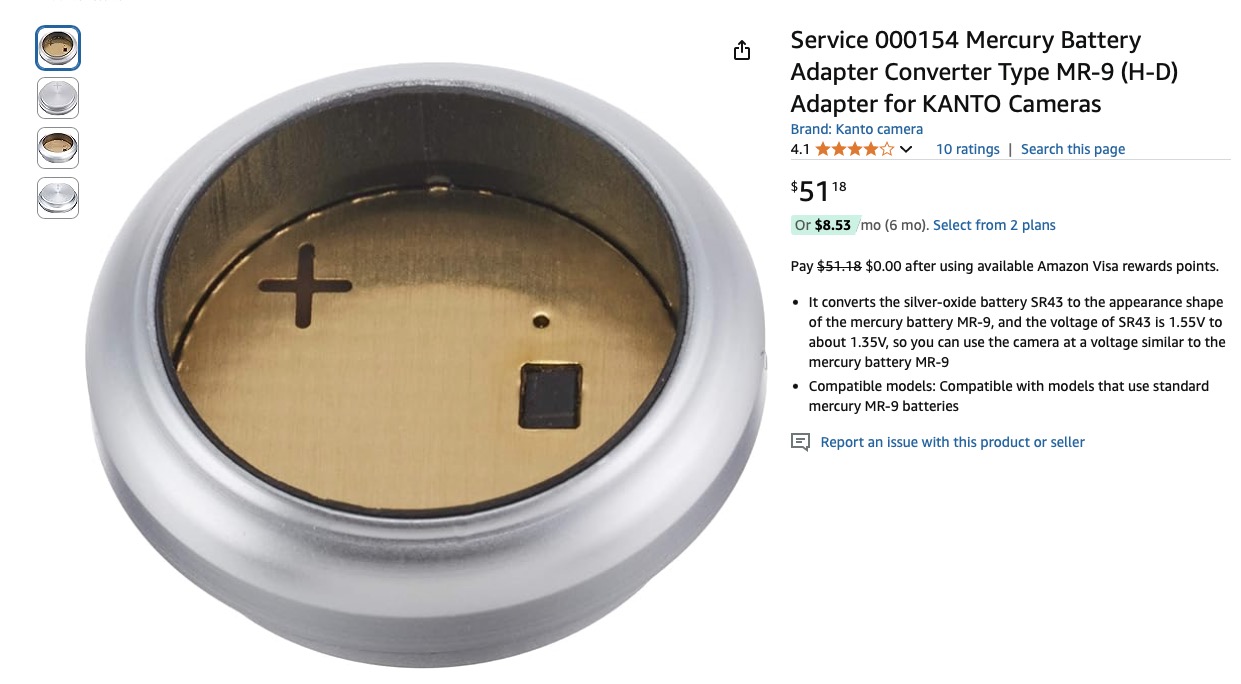
The Kanto Camera MR-9 Mercury Battery Adapter.
All Leicameter M and most Leicameter MC/MR/MR4 models came in lovely satin chrome finishes to match that of the chrome Leica body. There were black version for the polyester set to match their equally tasteless black finish M bodies and, as they are rare, these command collector prices. They double in ugliness when the black paint wears off revealing the bare metal (zinc, not brass) underneath. Ugh!
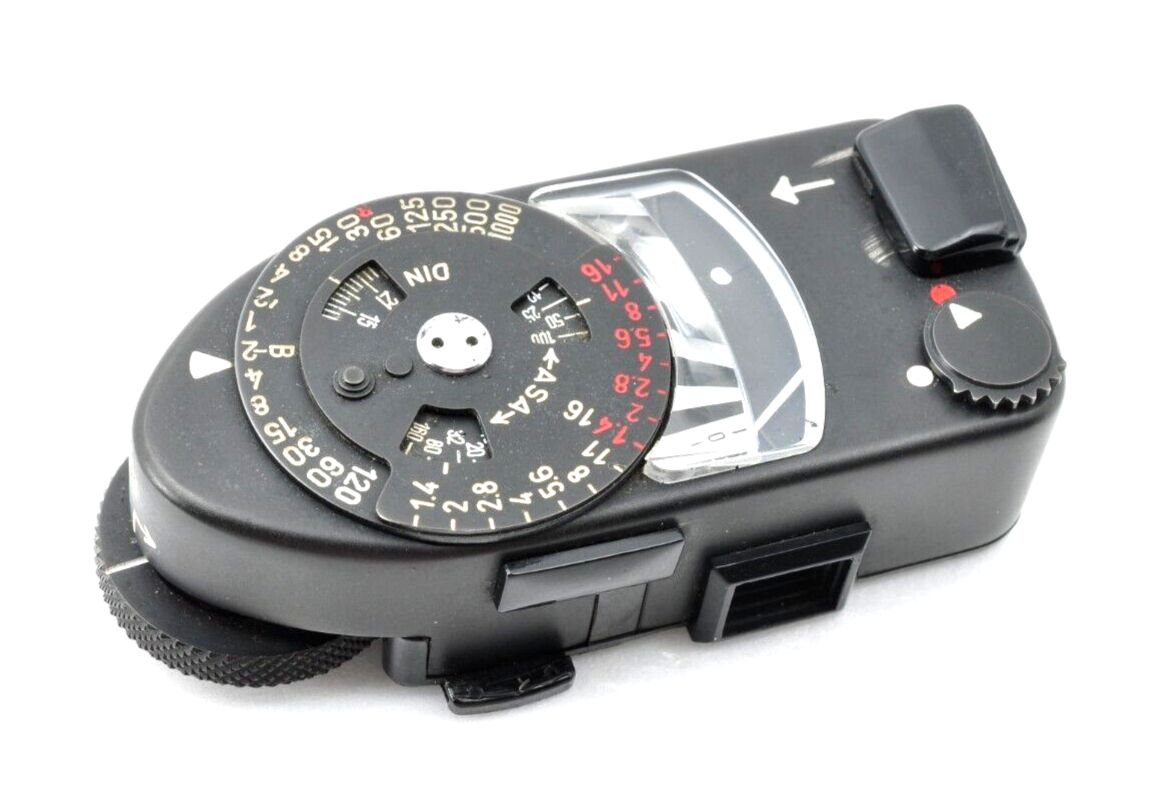
The black finish Leicameter MR4.
The Leicameter MR4 is an effective and accurate light measuring tool if you can find a good one. I was lucky to find one which was overhauled and calibrated, after a long search. Reckon on paying $200 for a good one. The foot which goes in the Leica’s accessory shoe has no fewer than five screws holding it in place. The three large ones attach the foot to the body of the meter while the two small ones adjust tilt. Make sure that, after loosening the three large ones, the tilt is correctly set for parallelism with the camera’s top plate, which will ensure that the coupling pin on the meter’s knurled knob will engage properly with the related cut-out in the camera’s shutter speed dial. Leave those two tilt-adjusting screws too exposed or tilt the shoe too much and you will scratch the top plate of your Leica when inserting the meter.
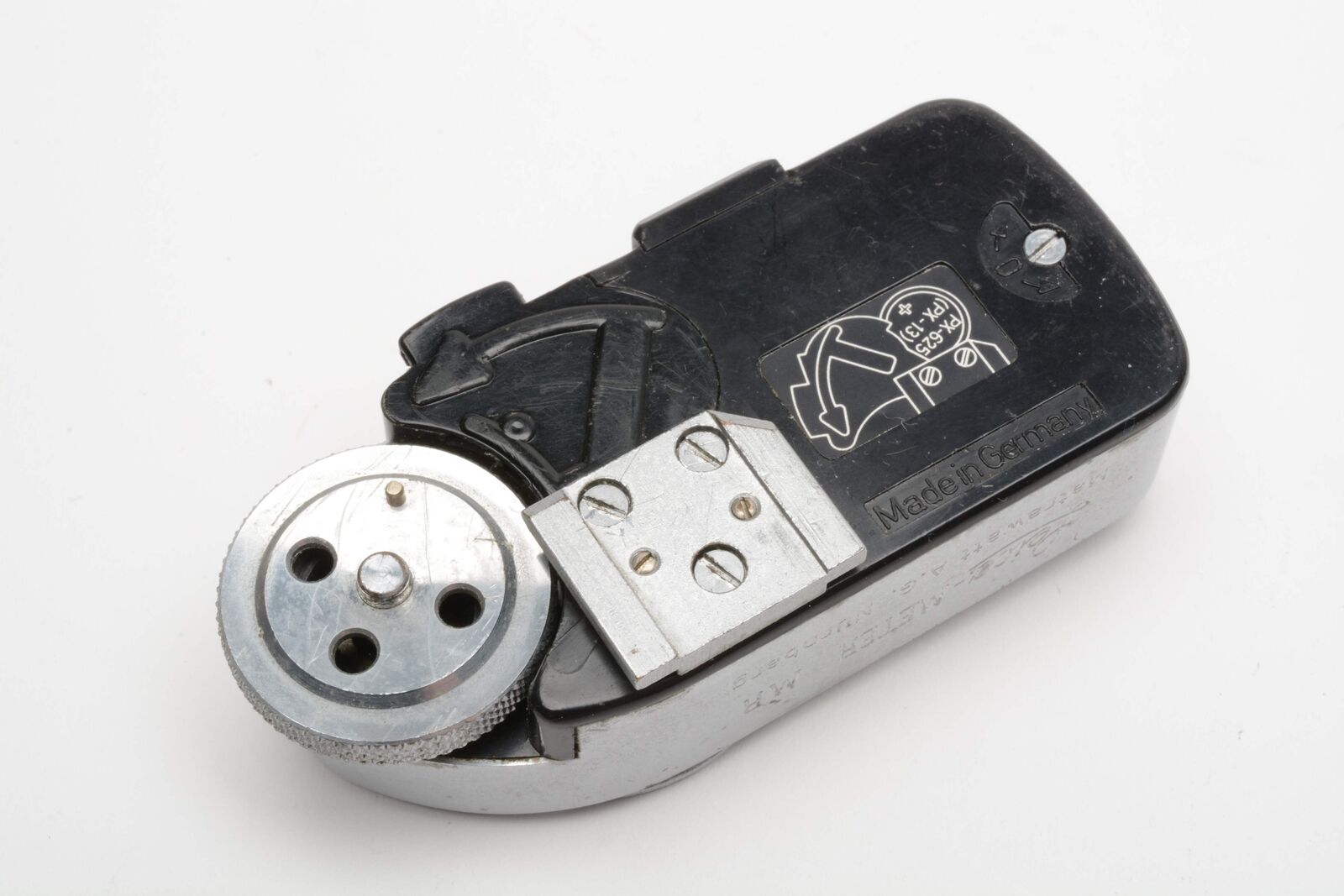
The accessory shoe screws and the battery compartment
door. The coupling pin for the camera’s shutter speed
dial is visible. The zero adjusting screw is
at the far right.
The only known issue, apart from the battery headaches just described, is that the small swinging door for the battery compartment, which engages the base of the meter along rather slim and fragile rails, has been known to break, so take it easy when replacing the battery.
Can you use the Leicameter MR4 on an early Leica M3 with the 1/5, 1/10, 1/25, etc. non-geometric shutter speed progression? Absolutely. The arc distended by the range of shutter speeds on the camera’s dial on the older M3 models is identical to that where the geometric shutter speed progression (1/2, 1/4, 1/8, etc.) was adopted. The placement of the coupling notch in the shutter speed dial at the ‘B’ setting is also identical. So while the Leicameter MR/MR4 will couple correctly with the old dial, the engraved geometric speeds atop will not respect the clicks of the camera’s dial. When you set the shutter speed to, say, 1/50th, the indicator arrow on the top dial of the Leicameter will fall between 1/30th and 1/60th, as that’s where 1/50th is. But the meter will still measure light correctly.
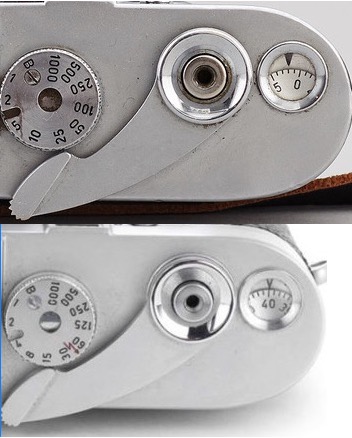
The included arc of shutter speeds is
identical on the old version and the
new geometric one, as is the placement
of the coupling notch.
For an inexpensive and elegant non-coupling accessory shoe mounted option, take a look at the Reflx meter, reviewed here. It will work with any camera with an accessory shoe, or handheld.
Update March 8, 2025: Well, wouldn’t you know it? The Taiwanese company Keks has just released a digital version of the Leicameter which couples with the shutter speed dial of the Leica M. Priced attractively at $120 it uses an OLED display for aperture, shutter speed and ISO. You can read all about it here.
